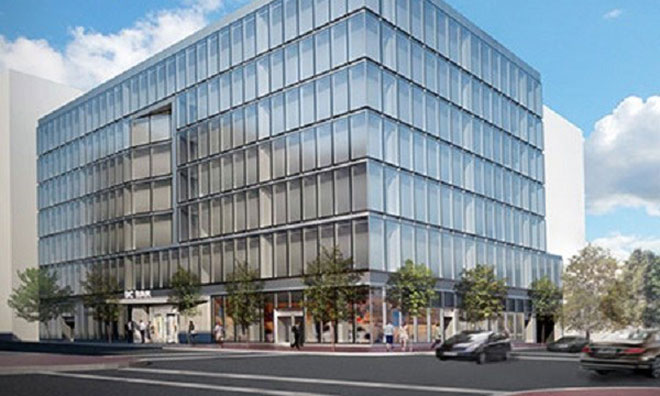
The Strategy Behind a Building Plan
The DC Bar’s new headquarters is a product of thinking ahead about members, their industry, and finances.
Earlier this month the District of Columbia Bar broke ground on a new headquarters building. The $70 million price tag is steep—all the more reason for there to be a smart strategy behind it. Indeed, one of the things that interests me about the decision to build is that it’s a physical manifestation of a lot of the best practices of environmental scanning and thinking about the future of your association that goes into a strategic plan.
Also, one of the key people leading the move was battling cancer in the midst of it—we’ll get to that, and there’s a strategy lesson in that as well.
On the surface, the DC Bar looks like a classic “golden handcuffs” association—membership is mandatory in order to practice law in Washington, D.C., and though the bar doesn’t have a certification, it does require completion of a paid course in order to maintain membership in good standing. Those facts are somewhat deceptive, though, according Victor L. Velazquez, CAE, DC Bar’s chief operating officer. The association has approximately 100,000 members, but “60,000-plus of our members don’t need to practice in the District,” he says.
Some members are no longer in the D.C. area, and some just want to keep their options open. “We have to fight for those folks that every year who make a decision to continue to keep their dues, and frankly, we’re one of a handful of associations and bars that they belong to.”
Any question anyone could anticipate, we came up with it.
So in recent years, the DC Bar has focused on what it can provide to members who recognize membership isn’t essential. Increasingly, that’s meant responding to the disruption in the legal profession, where jobs are more scarce and transitions are more common—more than a fifth of the bar’s members, for instance, have changed the focus of their practice, and a third of those say they have made the transition involuntarily.
The bar’s new strategic plan highlights career guidance, networking opportunities, and educating members about changes in the legal profession. “It’s community, it’s resources, the practical stuff, but also for the attorneys who are not thinking about the big shift that’s happening in the profession,” he says. “We think we need to play a more active role.”
That’s where the building comes in. The new headquarters is designed to save the DC Bar money in the long run—around $30 million over 30 years by way of saved lease costs and new revenue from building tenants. And the space will include more event and education spaces to fulfill that mission. And because the association was healthy enough to use reserves today to help pay for it, the timing was right.
Not that the decision was frictionless. The bar spent a lot of time reaching out to stakeholders and members explaining the rationale behind the building. “Any question anyone could anticipate, we came up with it,” Velazquez says. “We provided answers to the board—we did over a year of educating of our board.” The association’s accountants came in to talk about the association’s reserves status and overall financial health. The brokers for the building deal came in to talk about the real-estate market in the District. An independent broker came in for the same discussion to provide an unbiased perspective. Member questions about dues raises were addressed. Staff questions about the new work layout were fielded. Leadership produced videos about the virtue of the move, including this one featuring Velazquez:
Velazquez joined the DC Bar in November 2013. In August 2014 he was diagnosed with testicular cancer, requiring two surgeries and five months of chemotherapy after learning the cancer had metastasized to his lungs. He’s now in remission. He says he saw the big-picture goal of getting the building deal done as a way to focus his energies during an extremely demanding medical battle. “I sat for many months strapped to an IV, getting my chemo and I thought, ‘I could watch TV or I could get jazzed about this cool stuff we we’re doing,’ so I focused on the latter,” he says. “It was very new for an organization that had been pretty slow and steady—this was all radical thinking, and if I wasn’t poking at it I felt like the momentum would stop.”
But the other lesson learned is that while big strategic moves need a champion, it also needs a team that can keep the energy level up throughout the process.
“If I were to exit stage left, it was clear to folks what needed to get done,” he says. “You can barely figure out what to do when you’ve got an obvious challenge to the profession you are representing right in front of you, but what happens when the unexpected happens? Whether you’re a small association of ten people or whether you’re mid-size or huge, you have to be thinking about, what does the board know? Are the markers there, and who owns them? We had those in place, and so it worked out for us.”
What’s your process for guiding stakeholders through a strategic change with a sizable price tag? Share your experiences in the comments.
An artist's rendering of the District of Columbia Bar's planned headquarters. (Handout photo)






Comments